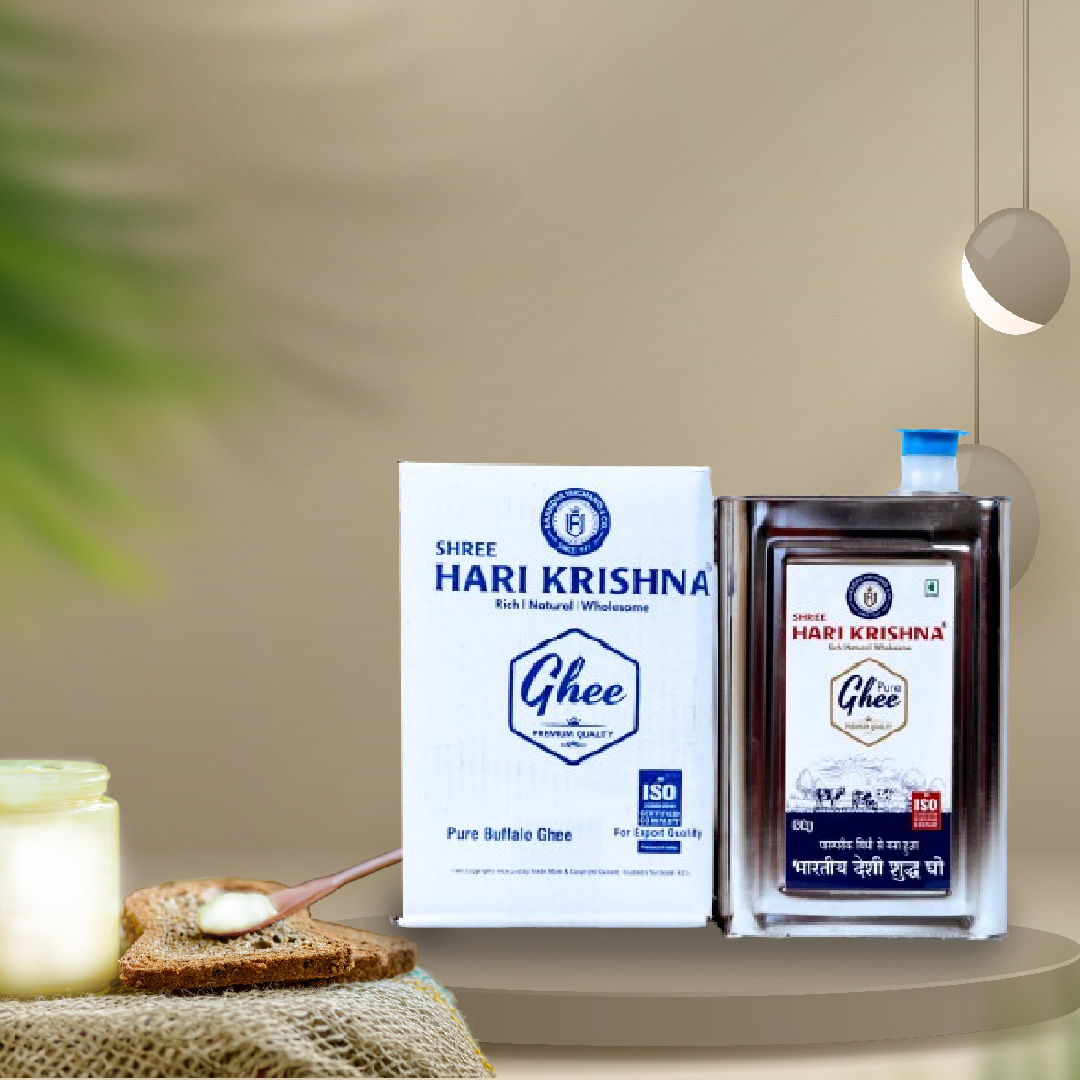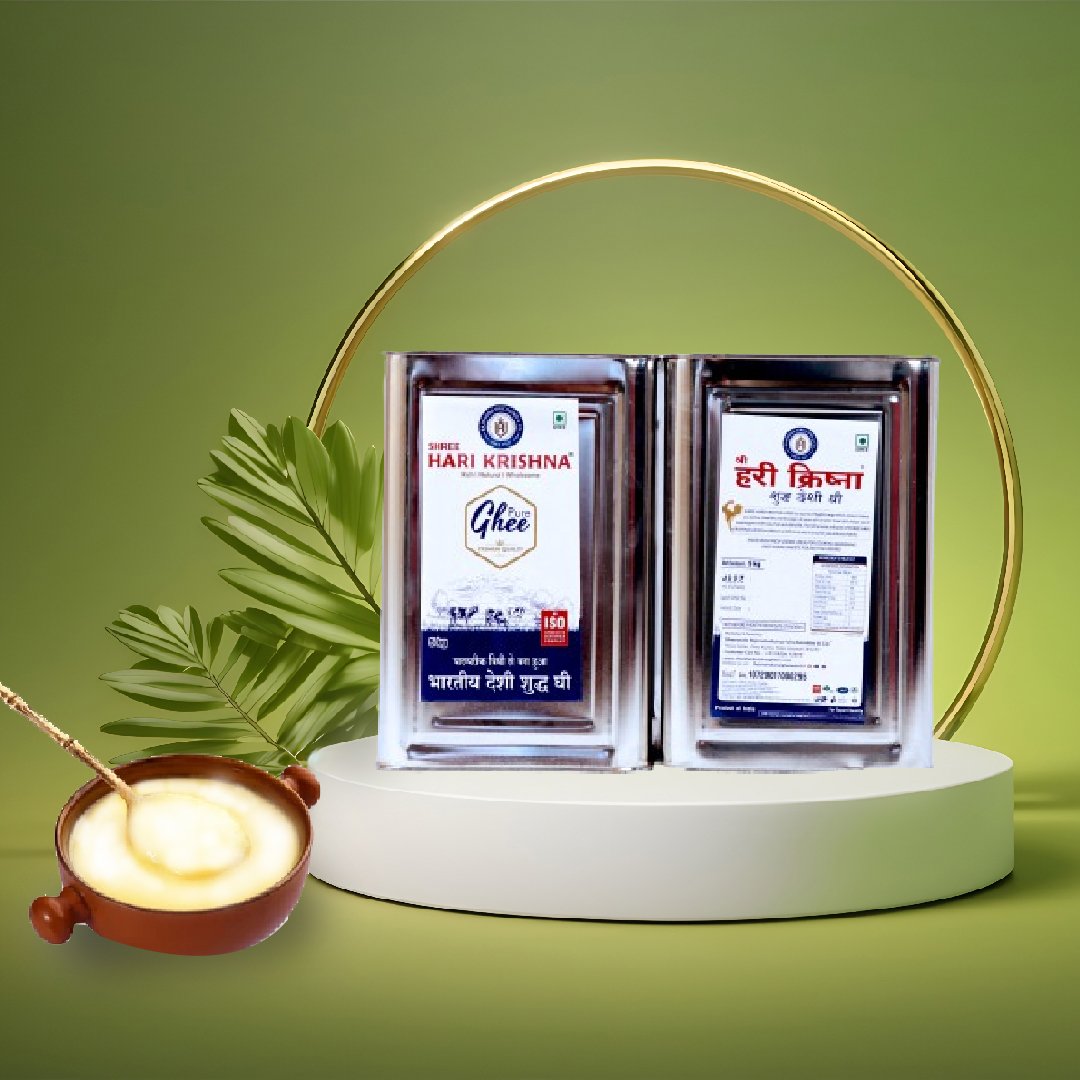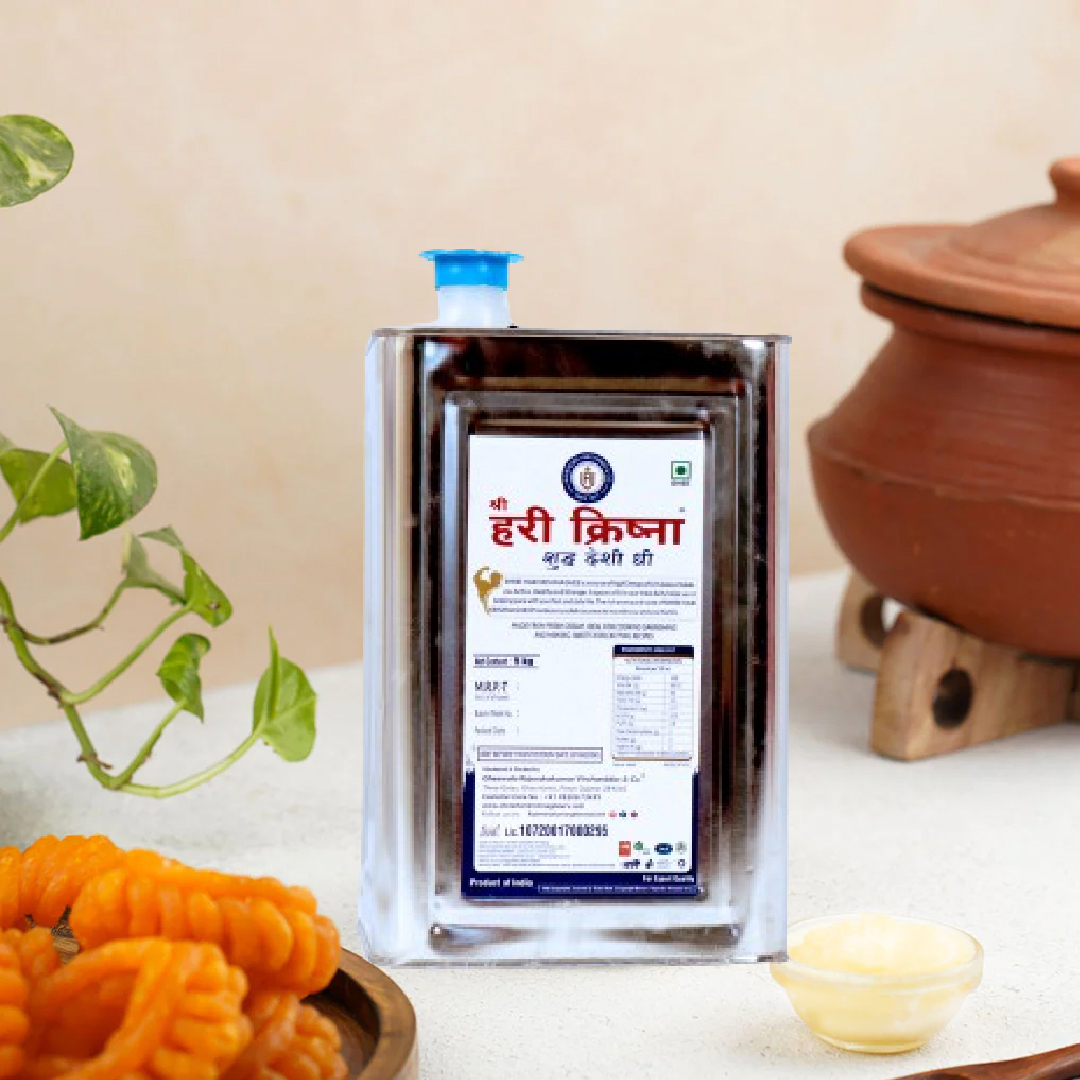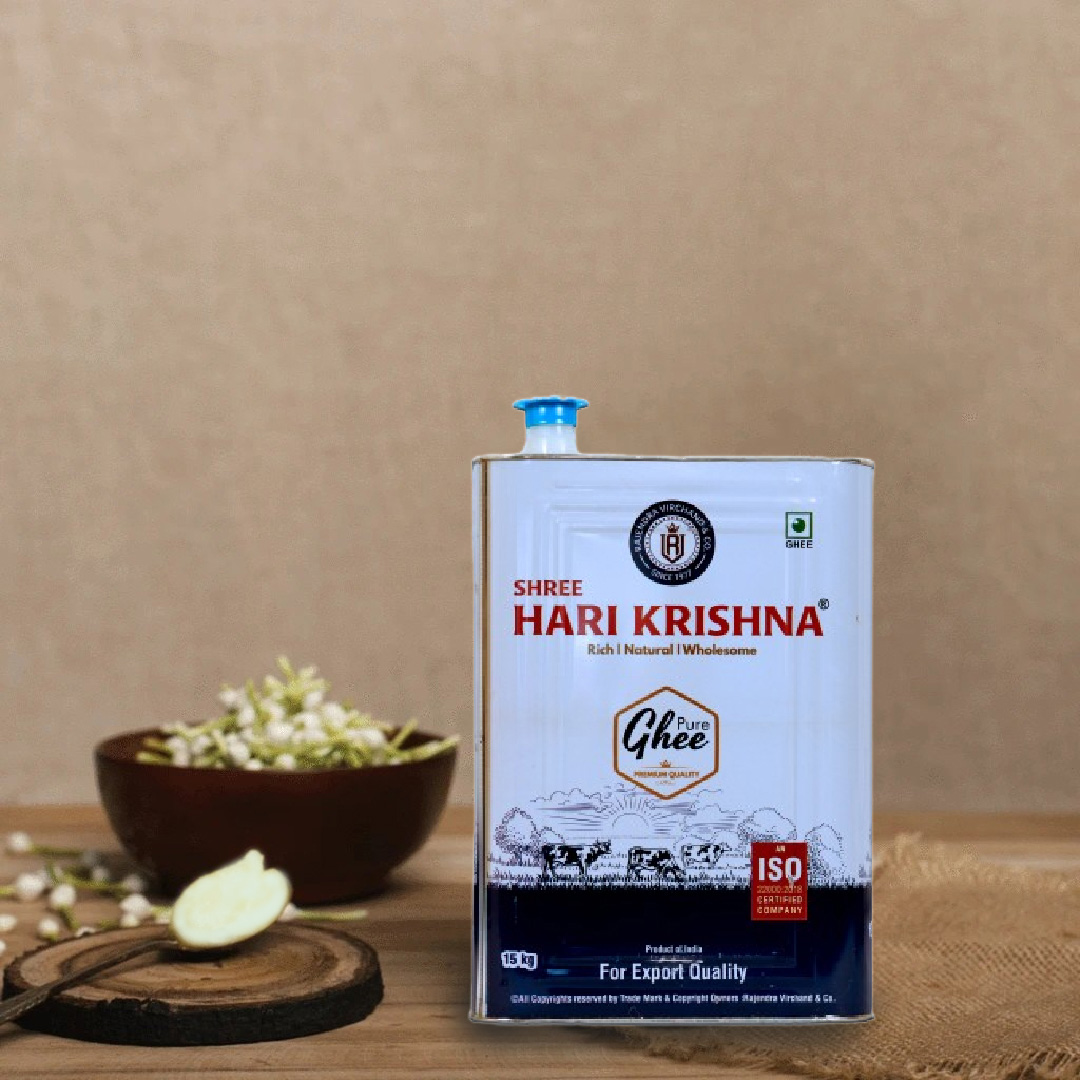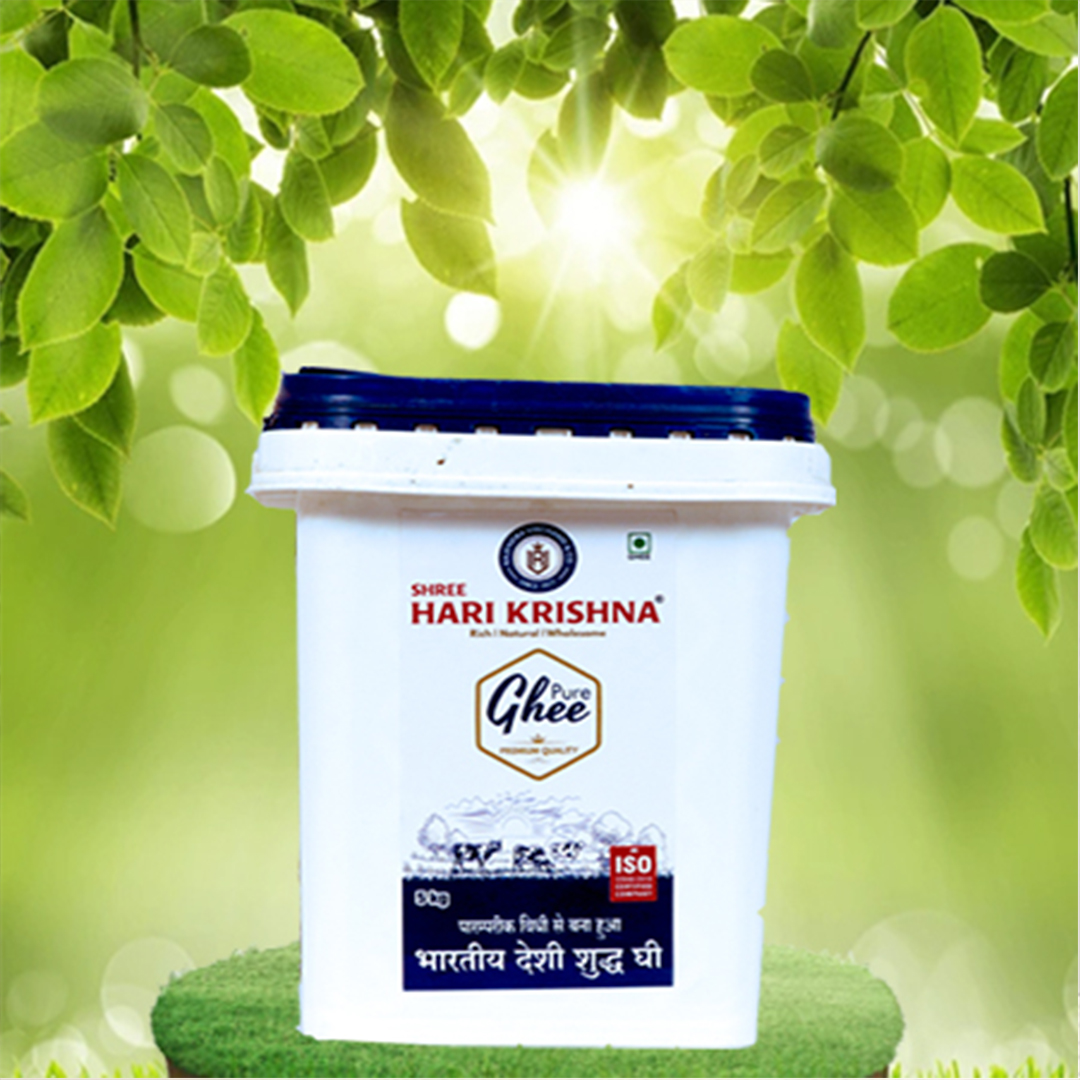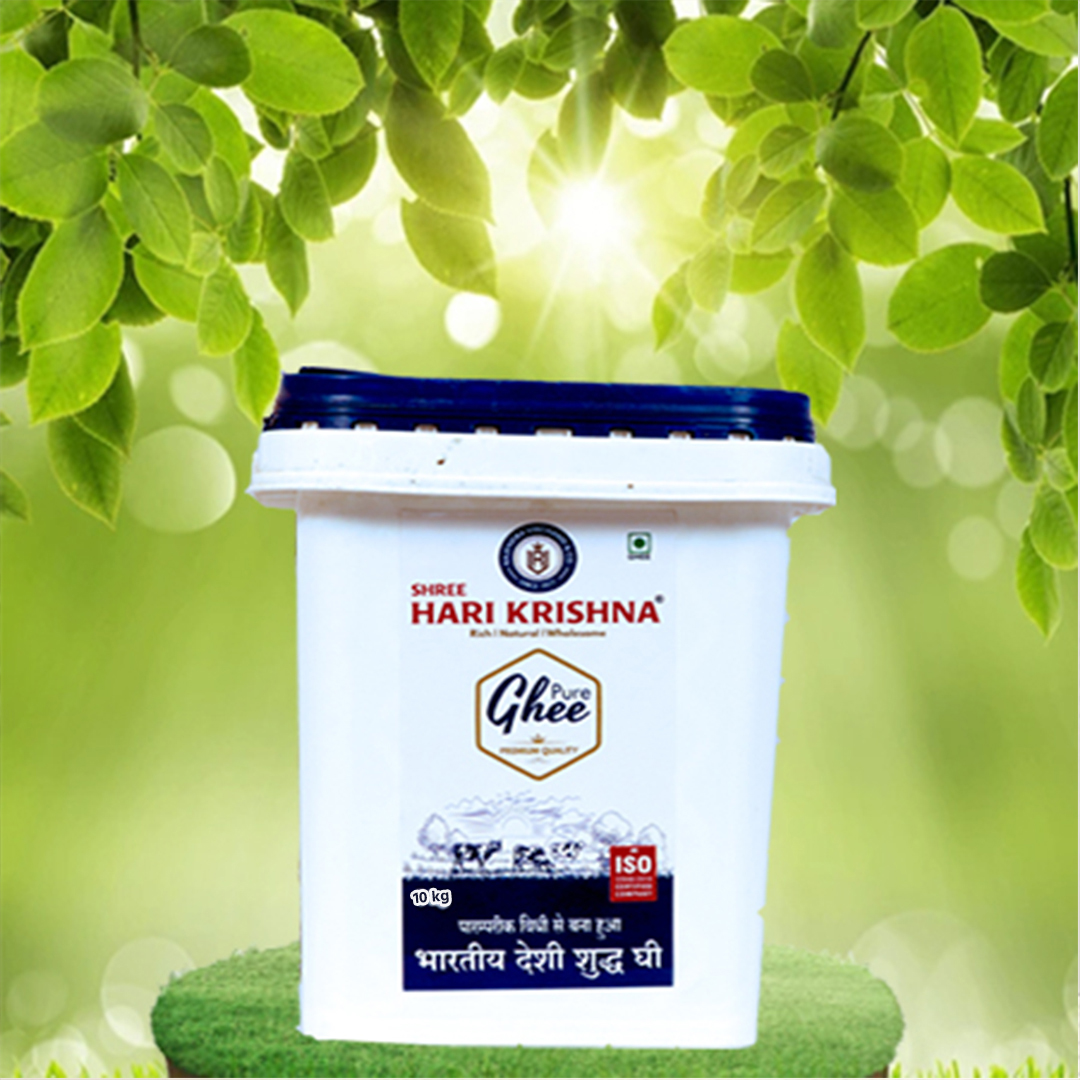Desi Buffalo Premium Ghee
Buffalo ghee, also known as buffalo milk ghee, is a clarified Cream made from the milk of buffalo. It is a popular ingredient in many South Asian and Middle Eastern cuisines, and it has been used for centuries in traditional Ayurvedic medicine for its potential health benefits. Here’s an explanation of buffalo ghee and some of its associated health benefits:
- Clarified Cream
- Nutrient Composition
- Vitamins and Minerals
- Lactose-Free
- High Smoke Point
- Potential Anti-Inflammatory Properties
- Ayurvedic Perspective
- Supports Digestion
- Joint Health
- Energy Source
| Amount per 100 ml. | |
|---|---|
| Energy (kcal) | 895 |
| Total fat (g) | 99.70 |
| Saturated fat (g) | 58 |
| Trans Fat (g) | 3.4 |
| Cholesterol (mg) | 0.17 |
| MUFA (g) | 22.8 |
| PUFA (g) | 2.6 |
| Total Carbohydrate, (g) | 0 |
| Protein (g) | 0 |
| Vitamin A (ug) | 0 |
| Vitamin A expressed as Beta Carotene |
Buffalo Ghee Benefits
Rich in Healthy Fats :
Buffalo ghee is high in monounsaturated and polyunsaturated fats, which are healthier options compared to trans fats or excessive saturated fats. These healthy fats are crucial for maintaining good cardiovascular health and supporting the absorption of fat-soluble vitamins.
High in Calories :
For those needing a calorie-dense diet, such as athletes or those involved in heavy physical activities, buffalo ghee provides a concentrated source of energy that can help sustain performance and endurance.
Contains Essential Vitamins :
Buffalo ghee is an excellent source of vitamins A, D, E, and K. Vitamin A is vital for eye health, immune function, and skin vitality. Vitamin D plays a critical role in bone health and immune response. Vitamin E acts as an antioxidant, while Vitamin K is key for blood clotting and bone metabolism.
Improves Digestive Health :
The butyric acid in buffalo ghee helps nourish the cells of the intestines, aiding in digestion and possibly reducing the instances of bloating and uncomfortable gas. It also promotes the secretion of gastric acids, assisting in the efficient digestion of food.
Anti-inflammatory Properties :
Buffalo ghee contains butyrate, a fatty acid that possesses anti-inflammatory properties, which can help reduce inflammation in the body, making it a good dietary addition for those suffering from inflammatory conditions.
Strengthens the Immune System :
With its rich antioxidant content, buffalo ghee boosts the immune system by combating free radicals that can cause cellular damage and lead to diseases.
Beneficial for Bone Health :
The high levels of Vitamin K2 in buffalo ghee help in the proper deposition of calcium in the bones, thus increasing bone density and reducing the risk of fractures.
Enhances Skin Health :
The essential fatty acids present in buffalo ghee not only moisturize and nourish the skin but also protect it from damage due to free radicals, thanks to its antioxidant properties, which can delay signs of aging like wrinkles and skin sagging.
Good for Heart Health :
Despite misconceptions, moderate consumption of buffalo ghee can actually be beneficial for heart health. The vitamins and healthy fats in ghee help in reducing bad cholesterol levels while increasing good cholesterol.
Culinary Uses :
Apart from health benefits, buffalo ghee is esteemed for its rich, creamy texture and deep flavor, which enhances any dish it is added to. It is highly prized in cooking for its aroma and the unique taste it brings to both sweet and savory dishes.
FAQs
Both cow and buffalo ghee have their own unique benefits. Cow ghee is lighter and has a lower fat content, making it suitable for people who prefer a less dense form of ghee. Buffalo ghee, on the other hand, is richer in fat and calories, making it ideal for those requiring higher energy intake or those who appreciate a richer flavor.
Yes, consuming a small amount of buffalo ghee on an empty stomach can help in lining the stomach and improving digestion. It may also provide a slow and steady source of energy throughout the day.
The amount of buffalo ghee one should consume can vary based on individual dietary needs and health conditions. Generally, one to two tablespoons of buffalo ghee per day is considered safe and beneficial for most adults. However, it’s best to consult with a healthcare provider to determine the right amount based on personal health and nutritional requirements.
